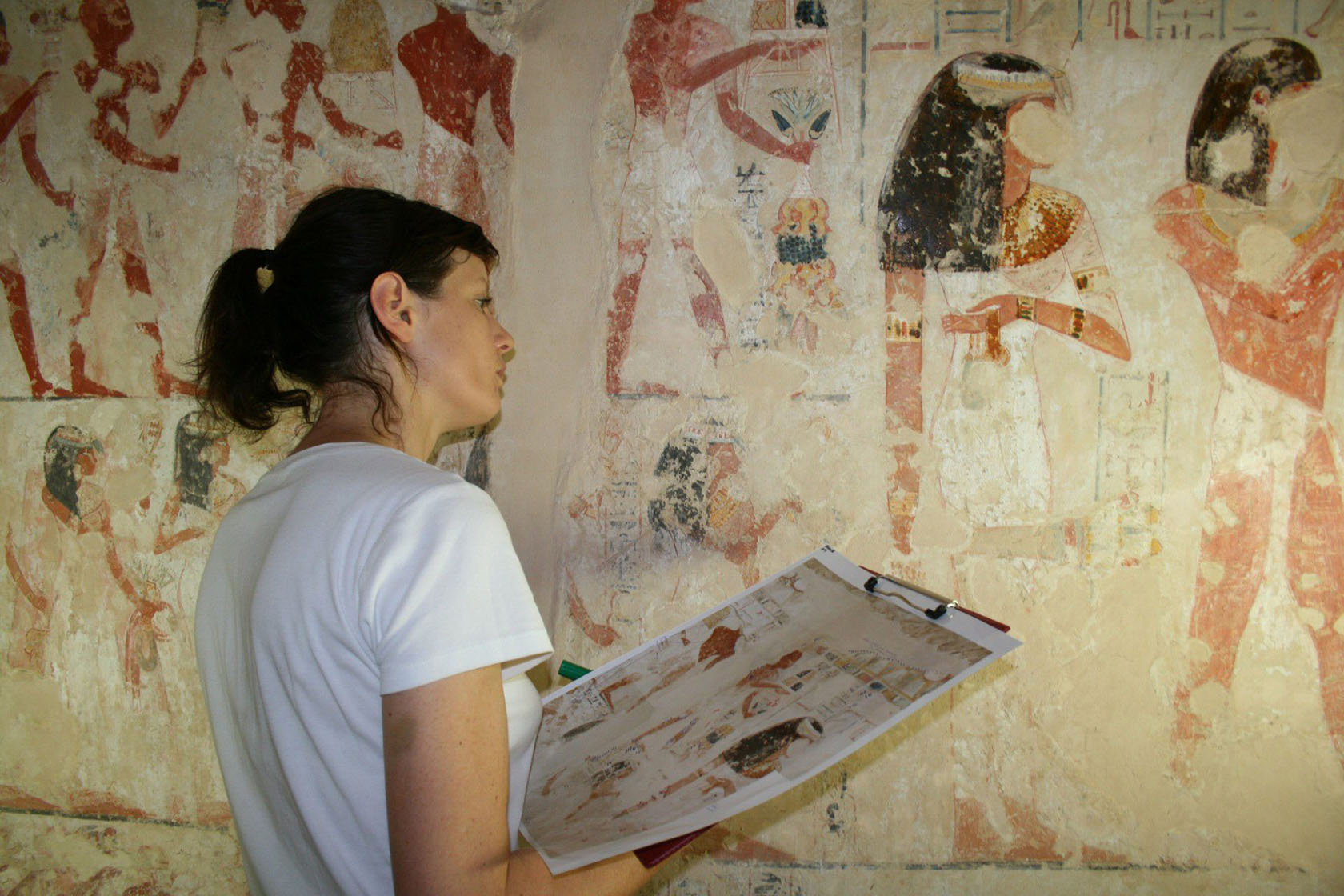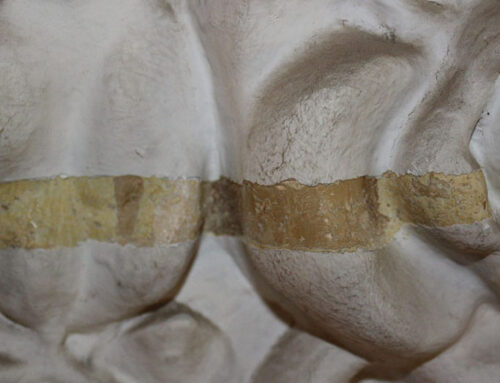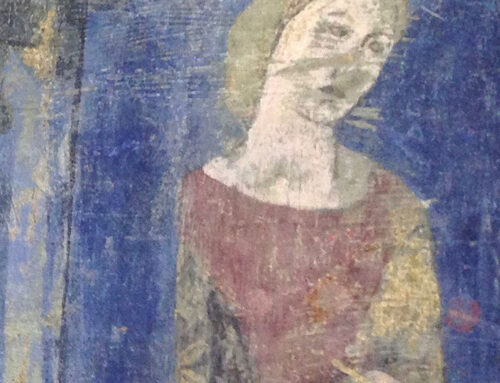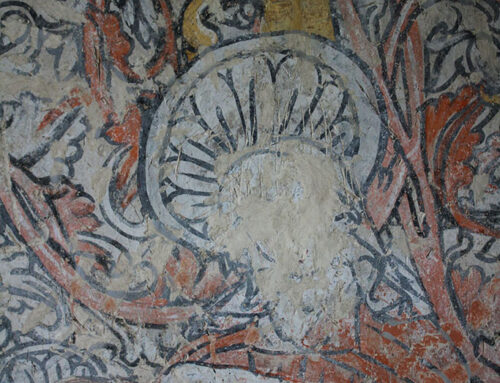Project Description
The Tomb of Menna, Valley of the Nobles, Luxor, Egypt
This was a two-year conservation project to conserve the 18th-Dynasty paintings in the Tomb of Menna for the American Research Center in Egypt, project director Dr Melinda Hartwig. I ran the conservation part of the project, which involved a full documentation and condition survey as well as practical conservation work to the paintings. The practical work concentrated on securing vulnerable edges, adapting and, in some cases, replacing unsuitable and failing old repairs, securing lifting and flaking paint, reducing a detrimental and heavy modern varnish coating from surfaces, as well as final presentation.
As part of the project full non-invasive paint analysis was undertaken to documented the wall painting materials (mortars, pigments, binders, and coatings) and their techniques of application, through complementary mobile non-invasive techniques, including elementary and structural analysis: EDXRF, and Raman spectroscopy, ultraviolet – visible and near infrared spectroscopy and a range of imaging techniques – photography in flat, raking and UV lights, UV flourescence, reflectant UV. The analysis was undertaken by the Centre of European Archaeometry at the University of Liège, it was the first time a full range of mobile non invasive analysis techniques had been used in this way an Egyptian tomb, bringing a new level of understanding of the materials and techniques used in 18th dynasty Theban tomb decoration.
More details about the project can be found in the following publication: Melinda Hartwig, ed., The Tomb Chapel of Menna (TT 69): The Art, Culture, and Science of Painting in an Egyptian Tomb (ARCE Conservation 5), Cairo: AUC Press, 2013






